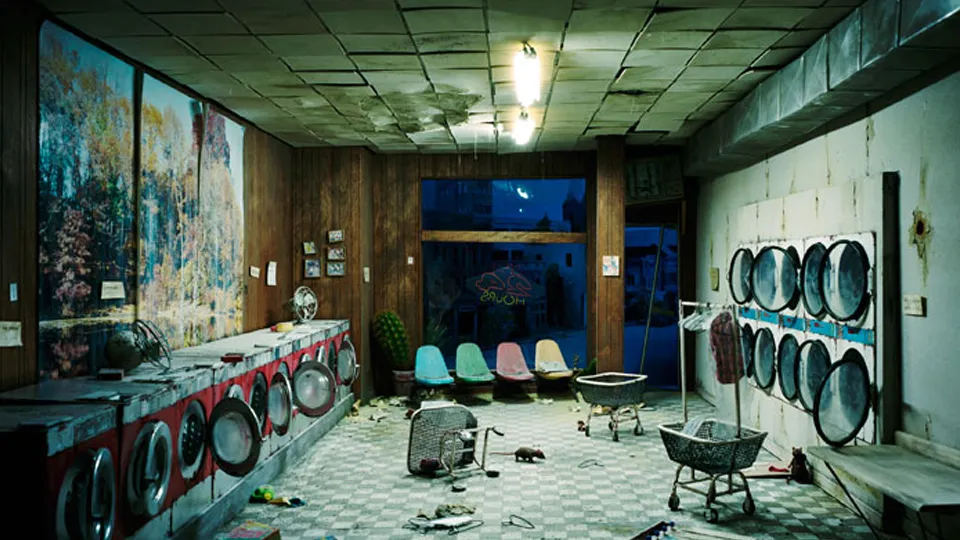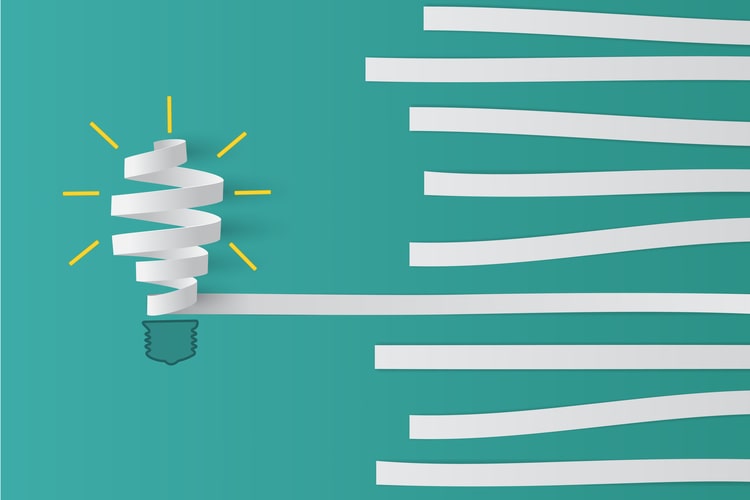The fashion industry stands on the brink of a materials revolution, where lab-grown textiles promise to reshape how we produce, consume, and think about clothing.
🧬 The Science Behind Lab-Cultivated Fashion Materials
Laboratory-grown materials represent a paradigm shift in textile production, combining biotechnology, material science, and sustainable innovation. Unlike traditional fabrics that rely on agriculture or petroleum-based processes, these revolutionary materials are cultivated using cellular biology, fermentation technology, and bioengineering techniques that were once confined to medical research facilities.
The process typically begins with a small sample of cells—whether from animal tissue, fungi, bacteria, or plant matter. Scientists nurture these cells in controlled bioreactors, feeding them with nutrient-rich media that encourages rapid growth and reproduction. Within weeks, what started as microscopic organisms transforms into usable material that can be harvested, processed, and transformed into garments that rival or exceed the performance of conventional textiles.
Companies like Bolt Threads, Modern Meadow, and Spiber have pioneered commercial applications of this technology, creating materials that mimic spider silk, leather, and other high-performance fabrics. The precision afforded by laboratory conditions allows manufacturers to control texture, strength, elasticity, and even color at the molecular level—something impossible with traditional textile production methods.
🌱 Mycelium: Fashion’s Fungal Future
Mycelium-based materials have emerged as one of the most promising lab-cultivated alternatives to animal leather. This fungal network, which forms the root structure of mushrooms, can be grown in controlled environments within days rather than the months or years required for raising livestock.
The production process is remarkably straightforward yet scientifically sophisticated. Mycelium is fed agricultural waste products like sawdust or corn stalks, which the fungi consume while growing into dense, fibrous mats. These mats are then harvested, treated, and processed into a leather-like material that possesses many of the desirable qualities of animal hide—durability, flexibility, and aesthetic appeal—without the environmental burden.
Brands such as Hermès, Stella McCartney, and Adidas have already incorporated mycelium leather into their collections, signaling mainstream acceptance of this innovative material. The texture can be customized during growth, allowing designers to specify thickness, grain patterns, and tactile characteristics before the material even leaves the laboratory.
Environmental Advantages of Fungal Materials
The sustainability metrics of mycelium-based textiles are compelling when compared to traditional leather production. Conventional leather tanning involves toxic chromium compounds, massive water consumption, and the environmental footprint of animal agriculture. Mycelium cultivation eliminates these concerns while producing a biodegradable end product that returns harmlessly to the ecosystem.
- Cultivation time reduced from years to approximately two weeks
- Water usage decreased by up to 99% compared to cattle farming for leather
- Zero greenhouse gas emissions from livestock digestion
- Agricultural waste converted into valuable material
- Complete biodegradability without toxic residues
🕷️ Lab-Grown Spider Silk: Nature’s Engineering Marvel
Spider silk represents one of nature’s most remarkable materials—stronger than steel by weight, more elastic than rubber, and completely biodegradable. However, farming spiders commercially proved impossible due to their territorial and cannibalistic tendencies. Biotechnology has provided an elegant solution: producing spider silk proteins without spiders.
Scientists identified the genes responsible for spider silk production and introduced them into microorganisms like yeast or bacteria. These genetically modified organisms then produce silk proteins through fermentation, similar to how yeast produces beer. The proteins are harvested, purified, and spun into fibers that replicate the extraordinary properties of natural spider silk.
This bioengineered silk offers performance characteristics that synthetic alternatives cannot match. Athletic brands have shown particular interest, as the material’s combination of strength, lightness, and breathability makes it ideal for high-performance sportswear. The fibers can be woven into fabrics that regulate temperature, wick moisture, and resist tearing—all while maintaining a soft, comfortable texture against the skin.
🧫 Cellular Agriculture: Growing Leather Without Animals
Cellular agriculture applies the same principles used in cultured meat production to fashion materials. Instead of raising entire animals for their hides, companies grow leather directly from animal cells in bioreactors. This approach maintains the authentic composition of animal leather—real collagen proteins arranged in genuine leather structure—without the ethical and environmental concerns of traditional production.
The process begins with a small biopsy from an animal, which causes no harm. These cells are then multiplied in nutrient-rich culture media, growing into sheets of tissue that possess all the characteristics of conventional leather. The resulting material is chemically identical to traditional leather because it literally is leather, just produced through a different method.
Companies like VitroLabs and Modern Meadow have demonstrated commercial viability, producing leather samples that luxury brands have begun incorporating into prototype products. The technology allows for precise control over thickness, texture, and even the elimination of natural imperfections that would normally require larger hide areas to work around.
Quality Comparison: Lab vs. Traditional Leather
| Characteristic | Lab-Grown Leather | Traditional Leather |
|---|---|---|
| Production Time | 2-4 weeks | 2-3 years |
| Consistency | Uniform quality | Natural variations |
| Environmental Impact | Minimal | High |
| Customization | Programmable properties | Limited by biology |
| Chemical Composition | Identical collagen structure | Natural collagen structure |
🌾 Bacterial Cellulose: The Microbial Textile Revolution
Bacterial cellulose represents another frontier in lab-cultivated materials. Certain bacteria strains produce cellulose—the same structural material found in plant cell walls—as a byproduct of their metabolism. When cultivated intentionally, these bacteria can generate sheets of pure cellulose that serve as a base material for various textile applications.
The cultivation process typically involves growing bacteria in sweetened tea or other sugar solutions. As the bacteria consume the nutrients, they excrete cellulose nanofibers that accumulate into a floating mat on the liquid surface. This mat is then harvested, dried, and processed into a fabric-like material with unique properties.
Suzanne Lee, a pioneer in this field, founded BioCouture to explore bacterial cellulose’s fashion applications. The material can be grown to precise specifications, draped while still wet to create three-dimensional forms, and treated to achieve different textures from leather-like to transparent. The ability to literally grow garments in their final shape eliminates cutting waste entirely—a revolutionary concept in an industry where fabric waste represents a significant environmental problem.
🔬 Precision Fermentation: Programming Proteins for Performance
Precision fermentation technology allows scientists to program microorganisms to produce specific proteins with desired characteristics. This approach goes beyond simply replicating natural materials; it enables the creation of entirely new textiles with programmed properties that don’t exist in nature.
Companies like Spiber in Japan have developed fermentation processes that produce customizable protein polymers. By adjusting the genetic instructions given to the production organisms, they can create materials that are more water-resistant, more elastic, or more durable than their natural counterparts. This programmability transforms textile production from discovering materials to designing them from the molecular level up.
The versatility of this approach means a single production facility can potentially create dozens of different materials by simply changing the genetic program running in the fermentation tanks. This flexibility could revolutionize supply chains, allowing manufacturers to produce exactly what’s needed when it’s needed, rather than maintaining large inventories of diverse fabric types.
💰 Economic Realities and Market Transformation
Despite the technological breakthroughs, lab-cultivated materials face significant economic hurdles before achieving price parity with conventional textiles. Current production costs remain substantially higher than traditional materials, though the gap narrows as production scales increase and processes become more efficient.
Investment in this sector has accelerated dramatically, with venture capital funding exceeding billions of dollars globally. Major fashion brands have established partnerships with material startups, providing both capital and guaranteed markets for production output. This corporate backing signals confidence in the long-term viability of lab-grown materials and accelerates the timeline toward commercial competitiveness.
The economic equation extends beyond simple per-unit costs. When environmental externalities are factored into pricing—water consumption, pollution remediation, carbon emissions—lab-cultivated materials often demonstrate superior economics even at current production costs. As regulatory frameworks increasingly account for environmental impacts, this advantage will become more pronounced in market pricing.
🌍 Environmental Impact: Quantifying the Revolution
The fashion industry ranks among the world’s most polluting sectors, responsible for approximately 10% of global carbon emissions and 20% of wastewater production. Lab-cultivated materials offer measurable improvements across virtually every environmental metric.
Water consumption represents one of the most dramatic improvements. Traditional cotton cultivation requires approximately 20,000 liters of water to produce one kilogram of fabric. Animal agriculture for leather demands even more when accounting for the animal’s entire lifecycle. In contrast, lab-grown alternatives typically require less than 1% of these water volumes, as cultivation occurs in closed-loop systems where water is recycled continuously.
Land use efficiency shows similar improvements. Cattle ranching for leather occupies vast territories that might otherwise support carbon-sequestering forests or biodiverse ecosystems. Mycelium cultivation, by comparison, occurs in vertical stacks within controlled facilities, producing equivalent material volumes from footprints thousands of times smaller. This spatial efficiency allows material production to move closer to urban manufacturing centers, reducing transportation emissions and enabling distributed production networks.
Carbon Footprint Comparison
Recent lifecycle analyses demonstrate that lab-cultivated materials produce significantly lower greenhouse gas emissions than conventional alternatives. Bacterial cellulose production generates approximately 95% fewer carbon emissions than cotton cultivation. Lab-grown leather eliminates the methane emissions from cattle digestion, which represent a particularly potent form of greenhouse gas. Even accounting for the energy requirements of bioreactors and climate control, the carbon math favors laboratory cultivation decisively.
👗 Designer Adoption and Fashion Forward Movement
Forward-thinking designers have embraced lab-cultivated materials not merely for sustainability credentials but for their unique aesthetic and performance possibilities. Stella McCartney has consistently championed alternative materials, incorporating mycelium leather and lab-grown silk into runway collections. Her influence has helped legitimize these materials within high fashion circles traditionally resistant to synthetic alternatives.
The haute couture world has discovered that lab-grown materials offer creative possibilities impossible with conventional textiles. Materials can be grown in specific three-dimensional forms, colors can be programmed at the cellular level, and properties can be adjusted for different areas of a single garment. This programmability appeals to designers seeking to push aesthetic boundaries while aligning with sustainable values.
Mainstream adoption follows the luxury segment’s validation. Sportswear brands like Adidas and Lululemon have introduced products featuring lab-cultivated materials, targeting consumers who prioritize both performance and environmental responsibility. This trickle-down effect from haute couture to mass market follows fashion’s traditional adoption pattern, suggesting lab-grown materials will achieve widespread use within the next decade.
🔮 Future Possibilities: What’s Coming Next
The next generation of lab-cultivated materials promises even more remarkable innovations. Researchers are developing textiles with integrated functionality—fabrics that generate electricity from body movement, materials that change properties in response to temperature or moisture, and textiles that actively purify air or water through embedded biological systems.
Customization represents another frontier. Imagine purchasing a garment where the material is grown specifically for you, with properties tailored to your body chemistry, climate conditions, and usage patterns. The same technology that enables customization could eventually support home production units, where consumers grow replacement materials or new garments on-demand using compact bioreactors.
Integration with digital technology could create truly smart fabrics. By incorporating biosensors during the growth process, materials could monitor health metrics, adjust insulation properties automatically, or even deliver transdermal medications. These possibilities transform clothing from passive covering to active interface between body and environment.
⚖️ Regulatory Landscapes and Safety Considerations
As lab-cultivated materials move toward mainstream adoption, regulatory frameworks are evolving to address safety, labeling, and standardization concerns. The European Union and United States have begun developing specific guidelines for bioengineered textiles, focusing on allergen testing, biodegradability claims, and production transparency.
Consumer safety testing protocols adapted from food and cosmetic industries provide templates for material evaluation. Lab-grown materials must demonstrate non-toxicity, colorfastness, and durability equivalent to conventional alternatives. The biological nature of production raises questions about potential allergens or microbial contamination, necessitating rigorous quality control throughout cultivation and processing.
Labeling standards remain contentious. Should bacterial cellulose be marketed as “vegan leather” or require distinct terminology? Can mycelium materials legally be called leather? These semantic questions carry significant marketing implications as brands navigate consumer perceptions and regulatory requirements across different jurisdictions.
🚀 Scaling Production: From Lab to Global Market
Transitioning from laboratory demonstration to industrial-scale production presents substantial technical and logistical challenges. Current bioreactor capacities limit production volumes, and maintaining sterile conditions becomes exponentially more difficult as operation scales increase. Companies are investing heavily in engineering solutions that preserve the biological precision of small-batch production while achieving the economies of scale necessary for competitive pricing.
Distribution infrastructure requires adaptation as well. Lab-grown materials often have different storage requirements than conventional textiles, potentially requiring temperature control or protection from contamination. Supply chain partners must develop handling protocols and quality assurance processes appropriate to biological products rather than traditional chemical or mechanical manufacturing.
The geographic distribution of production facilities will likely differ from current textile manufacturing concentration. Rather than requiring specific climatic conditions or vast land areas, lab cultivation can occur anywhere with reliable utilities and trained personnel. This flexibility could democratize material production, enabling regional manufacturing that serves local markets and reduces transportation emissions.
✨ The Transformation of Fashion’s Future
Lab-cultivated materials represent more than incremental improvement in textile production—they fundamentally reimagine the relationship between fashion and nature. Rather than extracting resources from ecosystems, this approach grows materials using biological processes that align with natural cycles. The programmability of lab-grown textiles transforms design from working within natural limitations to specifying desired properties and growing materials accordingly.
The timeline for widespread adoption depends on continued investment, technological refinement, and consumer acceptance. Early indicators suggest all three factors are trending positively. As production scales and costs decline, lab-cultivated materials will transition from premium novelty to mainstream staple. The fashion revolution is already underway in laboratories worldwide, growing thread by thread into an industry transformation that promises sustainability without sacrificing style, performance, or creativity.
This material revolution extends beyond environmental benefits to encompass ethical considerations, supply chain resilience, and creative possibilities that today’s designers are only beginning to explore. The future of fashion is being cultivated in laboratories today, preparing to reshape wardrobes and redefine our relationship with the materials that cover us.
Toni Santos is a visual explorer and microscopic storyteller who delves into the hidden aesthetics of microbial life. Through a fusion of scientific curiosity and artistic insight, Toni transforms the overlooked world of bacteria, fungi, and cellular forms into mesmerizing visual narratives—revealing the elegance, symmetry, and chaos that thrive at microscopic scales.
Rooted in a fascination with life forms too small to see yet too intricate to ignore, Toni’s work captures the bizarre beauty of microbial colonies, biofilms, and spore patterns. These images aren’t just representations—they are celebrations of the artistic intelligence encoded in nature’s tiniest architects.
With a background in visual design and bio-inspiration, Toni merges scientific imaging techniques with creative expression, transforming petri dish cultures, fluorescence microscopy, and microbial textures into works that provoke both wonder and contemplation.
As the creative force behind Vizovex, Toni offers curated visual studies, microbial-inspired designs, and essays that bridge art and microbiology—inviting viewers to reimagine what beauty means at the edge of perception.
His work is a tribute to:
The hidden geometries of living systems
The surprising elegance of microbial growth
The role of micro-life in shaping visual culture
Whether you’re a scientist, artist, or simply curious about the unseen world that sustains us, Toni opens a window into a universe where life writes poetry in colonies and patterns, one microbe, one frame, one breathtaking detail at a time.





